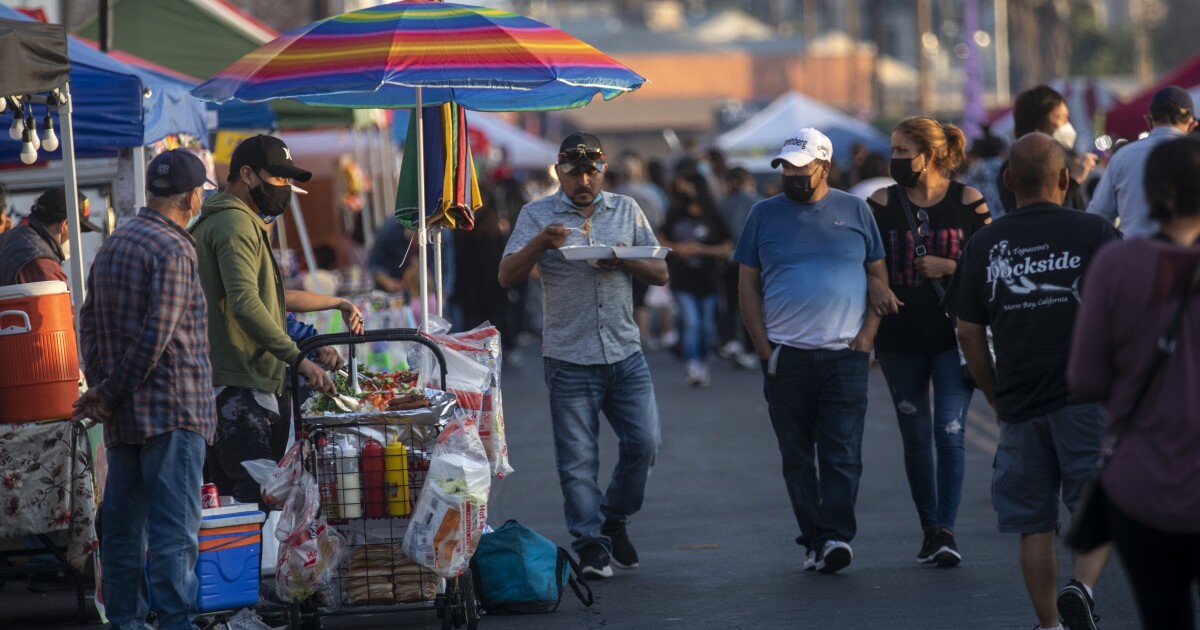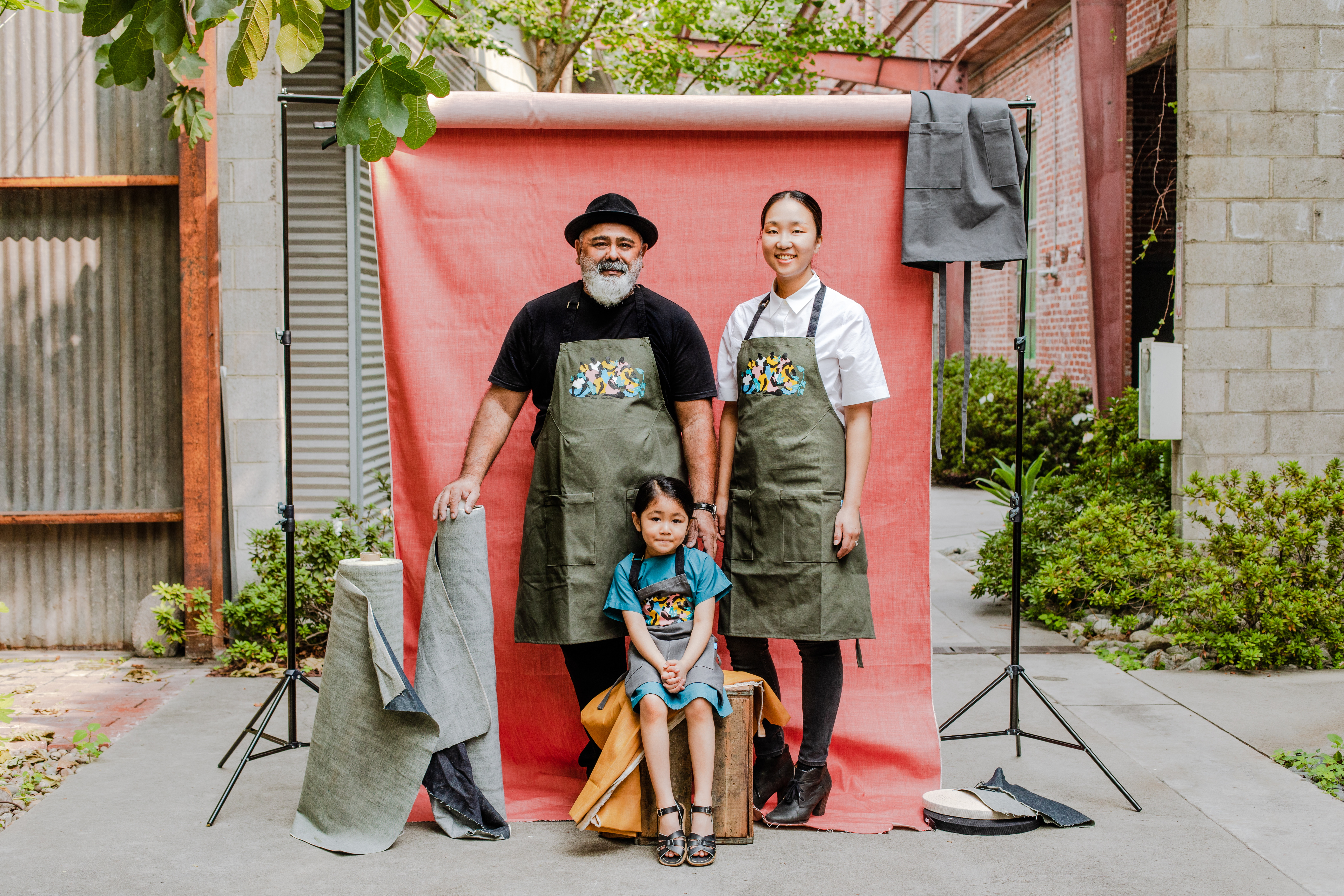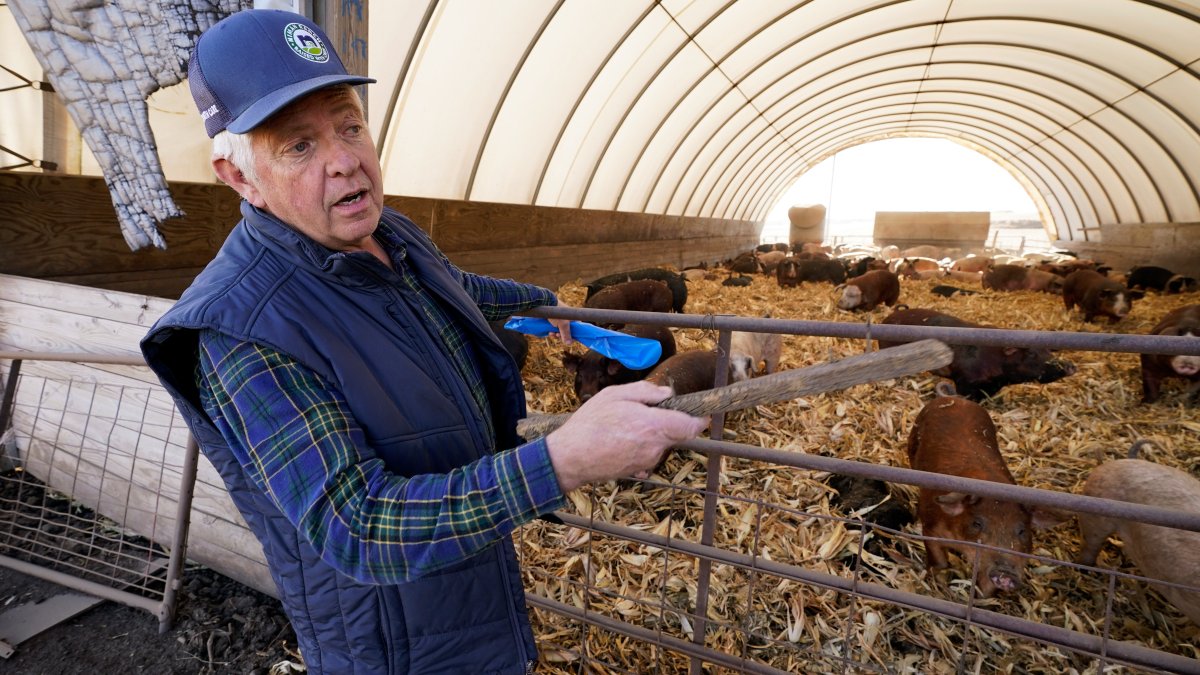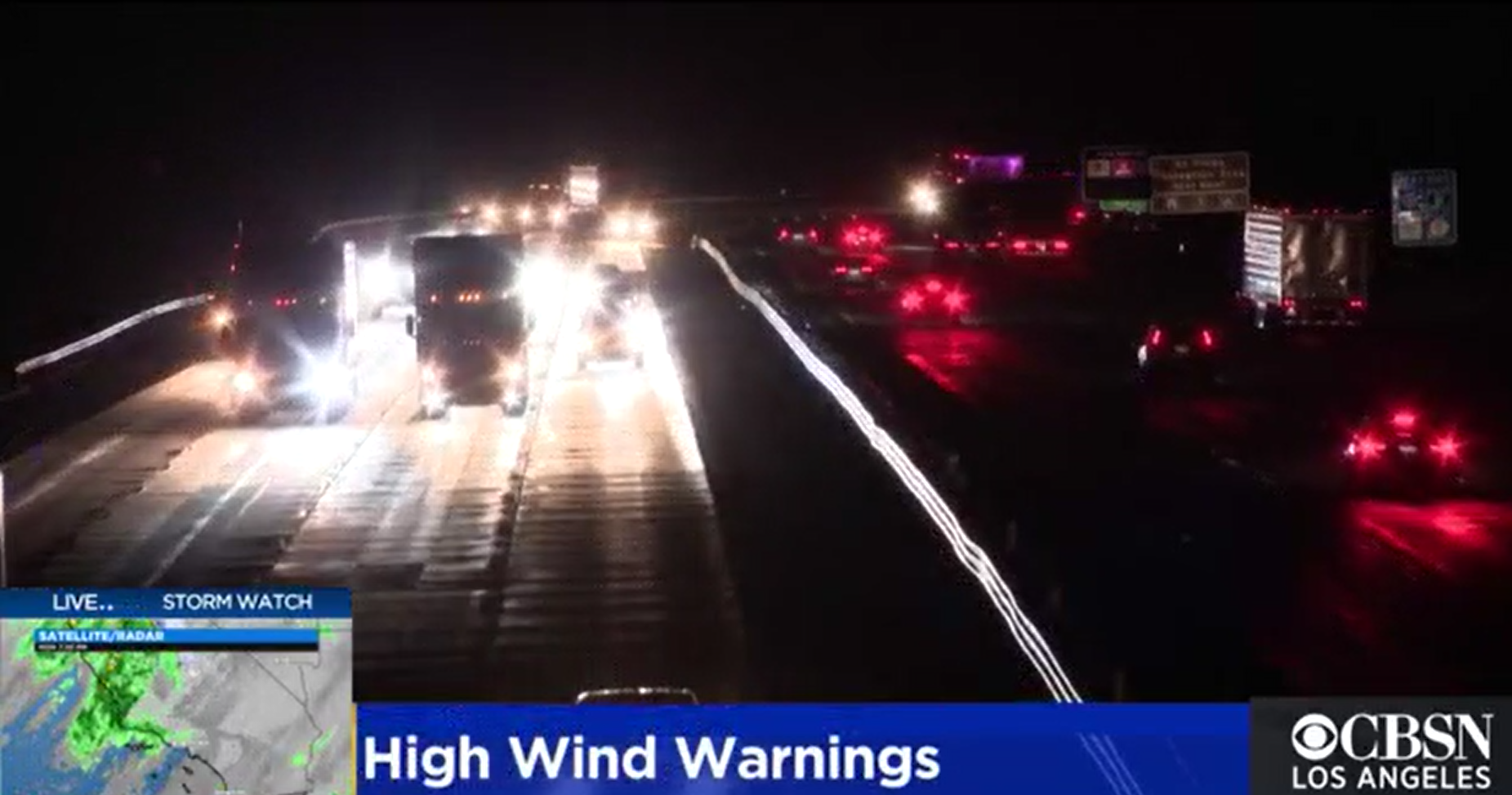Ten minutes from my house, subsequent to a disused rubbish dump, a motorway and the most important port within the nation, lies an inconceivable oasis of hills with vegetable and fruit bushes.
The San Pedro Group Gardens emerge like a mirage from their environment and occupy six hectares of city-owned property within the in any other case extremely industrialized space of the San Pedro port neighborhood in Los Angeles.
As soon as a part of the ancestral lands of the Tongva, an indigenous folks of California, the location – now divided into 224 household heaps and a neighborhood lot averaging 9 x 12 meters – has nourished Angelenos for a number of generations of immigrants because the gardeners moved to the Nineteen Sixties began right here with the tillage.
As many rural residents had been pushed into cities and throughout borders by industrialization and urbanization, some sought refuge within the gardens, an attachment to their homeland and a chance to protect and move on their cultural heritage.
Raúl Laly Fernández, who grew up within the small city of Purépero within the Mexican state of Michoacán, joined the neighborhood gardens in 1986, round 20 years after immigrating from Mexico Metropolis.
“Most people who backyard right here used to reside in small cities and ranches in Mexico, the place they labored the land for different individuals who personal the fields – we name them campesinos,” he mentioned. “After they got here right here, they’re now working within the metropolis. This nation means lots to them as a result of they really feel at house right here when working with the soil. “
Mr Fernández advised me about his early days within the gardens: “Earlier than I retired, I got here right here after work, grabbed a shovel and began working within the soil. And all of the stress, all the strain you get from work would simply go away, ”he mentioned. “I sorted my crops or talked to my gardening buddies. Generally we performed playing cards, Mexican video games that we all know. “
For Mr. Fernández, the gardens supplied much-needed day by day respite and a typical area that he in any other case missed in Los Angeles.
“The best way most individuals in Mexico reside, particularly in small cities, after work they go to the sq. the place folks collect within the evenings,” he mentioned. “They sit on a bench and discuss, greet passers-by, as a result of nearly everybody is aware of one another. We won’t do this right here. “
As a Russian-Ukrainian American who moved to the USA as a youngster and later married a second-generation Mexican American, I’m drawn to tales of migration, breakups, eager for their very own tradition, and the seek for a brand new house.
Once I found the San Pedro Group Gardens in 2019, I used to be instantly certain by the eager for ancestral land that I noticed on this lovingly tended panorama. At the moment, amid the drought in California, the gardens had been closed as a consequence of enhancements in water infrastructure. They reopened in June 2020 and I continued to study the historical past of the neighborhood via the trauma and dysfunction brought on by the pandemic and exacerbated by structural racism.
Kimberly Mentlow, a brand new gardener who was born in Ohio however raised in Los Angeles, desires to be part of the neighborhood. She has simply acquired her property after three years on the ready checklist. Working with the gardeners – sweating with them, getting soiled, rising and sharing issues with them – is especially necessary to her, she mentioned.
“I’m very comfortable to get to know them, to expertise them, to find out about their households or to see what their ardour is, what they need to develop, who they’re, how they specific themselves of their backyard,” she mentioned. “I can see my buddies Liz and Dave’s gardens and you may really feel who they’re. You may really feel their artwork, their tradition, their creativity, their experiences, their love. “
By becoming a member of the backyard, Ms. Mentlow additionally seeks reduction from the stress of her job and a connection to earth. “Time goes by and you do not have a look at your watch,” she mentioned of her time within the backyard. “You might be proper now.”
For a lot of gardeners, their household property served a number of generations and is a reminder of deceased relations.
Johny Cracchiolo, who immigrated along with his dad and mom from Palermo, Italy, in 1968, took over the property from his father, who died 23 years in the past. “That is my house away from house,” he mentioned, and nearly collapsed. His father, he mentioned, labored the land for 30 years. “So this act has been my father and me for 50 years.”
Imelda Ladia has an identical household historical past. After retiring within the Philippines, Mrs. Ladia’s father immigrated to Los Angeles to affix his daughters. He wished to return to the Philippines in time, however Mrs. Ladia tried to offer him a cause to remain.
“He beloved rising crops, so we bought him a plot of land right here,” she defined. Greater than 30 years have handed since then. “We got here right here with my sister, brother-in-law, and husband and helped him. We beloved serving to him and he was so comfortable. “
After the dying of her father, Mrs. Ladia and her household determined to proceed cultivating his property to have a good time his legacy. “Our coronary heart beats within the backyard,” she says.
For some folks, tilling the soil within the San Pedro Group Gardens is a chance to fix damaged ties with their ancestors’ homelands.
David Vigueras’ household has lived in Los Angeles for generations and he makes use of the backyard to rediscover the lifestyle of his indigenous Yaqui ancestors from Sonora, Mexico. “I have been to all of Mexico, however I’ve by no means been house, the Hiak Vatwe,” he mentioned. “I am attempting to mimic the way in which my folks, my ancestors, may need approached this backyard.”
Mr. Vigueras additionally values the range of the backyard neighborhood. “What I discover stunning right here is all of the ethnicities on this backyard, the totally different cultures that folks come from and that all of us share what we develop,” he mentioned. “There are Italians who develop Mexican chillies, different individuals who develop Italian eggplants.”
“We fertilize one another,” he mentioned.
In the middle of my reporting, the gardeners of San Pedro greeted me and introduced me with their knowledge, their tales and the fruits of their labor. Additionally they taught me methods to deal with soil and crops, which gave me a deeper understanding of the backyard itself. Shut friendships adopted. Ultimately the backyard turned the place I spent most of my time away from house throughout the pandemic pre-vaccination days due to the relative security provided by the out of doors widespread room.
My family in Ukraine grows a lot of their meals themselves, and so I’ve deeply related with the gardeners’ need to recreate a bit of their homeland, reconnect with a misplaced lifestyle and discover deeper roots of their adopted house – and all whereas nourishing not solely the well being of their household however the well being of a complete neighborhood.
Stella Kalinina is a Russian-Ukrainian-American photographer from Los Angeles. Their tales concentrate on human connections, private and communal tales, and the locations we reside. You may comply with her work on Instagram.














